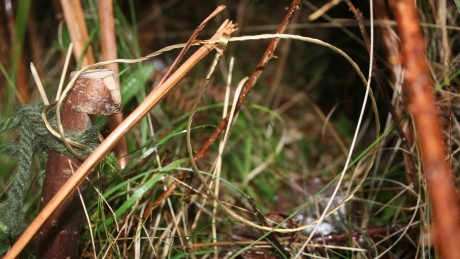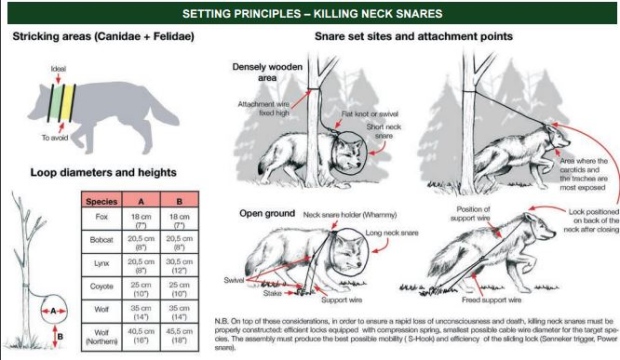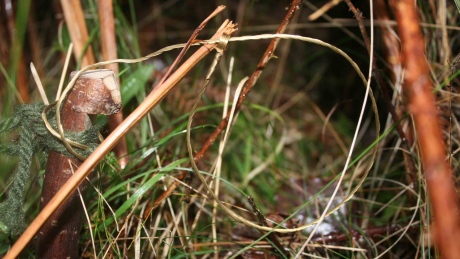
They also do not ask an animal …. if it happens to be an Endangered species….. here @protectthewolve and @friendsofwolves we do not agree with trapping being legal Anywhere Period!!
A dog choked to death in an animal snare, west of Edmonton, is a reminder of the inherent dangers of Alberta’s “lax” trapping regulations, according to Dwight Rodtka.
“The way it’s being run now in Alberta, it’s a free-for-all,” the retired predator control specialist said during a Tuesday interview on Edmonton AM.
“The public gets a lot of misinformation, and consequently they’re in the dark about a lot of things. People have no idea whatsoever that there is potential harm. Trappers operate in total secrecy and the public has no warning, even on public land that they, their children, and pets are in danger.”
Rodtka said he was compelled to speak out after an animal snare in Parkland County killed a pet dog and injured three more in the span of a few weeks.
“Dogs are snared and killed every winter,” he said. “This is old news that this is going on, and yet there is no requirement for warning signs at all for trappers. There is no requirement to notify the public that a trap is present in the area.”
Under Alberta’s trapping laws, there are limited restrictions as to where a snare can be set. In rural areas, outside designated conservation zones, licensed traps can be placed adjacent to an occupied dwelling or any parcel of land, as long as the trapper has permission from the property owner. Unlike baiting, licensed trappers are under no duty to warn the public about their presence in a given area.
“Trappers can set these killer traps and snares everywhere. If there’s walking paths, if there’s campgrounds out there, people go out snowshoeing,” said Rodtka.
“When these traps are set like that, people — at the very least — have a right to know.”
In a statement to CBC News, Janice Coffin, director of communications with Alberta Environment and Parks, said the “incident” in Parkland County was “unfortunate,” but confirmed the trap in question was legal.
“Following the incident, fish and wildlife officers responded to concerns raised and verified that the landowner met all legal requirements to trap on private land, including the method used,” said Coffin.
“In Alberta, resident trappers are required to have a resident fur management licence. In order to receive the licence, trappers must complete and pass the Alberta trapper education course, which includes the safe use of traps and humane trapping.”
But Rodtka remains unconvinced.
“Traps can take anywhere from 10 minutes to a week to kill an animal, and if they kill an animal it can be by starvation, or by exposure. If the animal was really, really lucky, it could be choked to death over a 10 minute period, that’s the best it could hope for,” said Rodtka.
“Snares are also considered by many to be humane, but this is totally false. Animals die a torturous death in them.”

(Alberta Trapping Guide )
For most of Rodtka’s 38-year career with the province, snares were a dreaded part of the job.
He managed Alberta’s predator control program, training and licensing government employees and the public in the use of snares, and making snares.
“I made what changes I could from within the department, while I was there. I wanted to get them banned, but we had it restricted down to as much as we could.”
In the years since his retirement in 2012, Rodtka has become a vocal critic of Alberta’s trapping program, even co-authoring a peer-reviewed study on the issues with the province’s predator control methods.
“There is a lot to this story that’s missing. That has been going missing for years,” said Rodtka.
” Since I retired, I finally have the chance to speak up and speak out against it.”
Source: Trapping regulations put public at risk, says former predator control officer – Edmonton – CBC News
